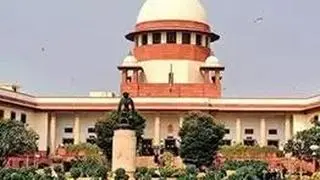Hand-holding by the Government for some years will enable Indian solar cell and module manufacturers stand up to the competition from the Chinese.
This view was expressed in a webinar by industry leaders, Ashish Khanna, President – Renewables, Tata Power, Ivan Saha, Chief Technology Officer, ReNew Power, in a webinar on ‘Attaining Self- Sufficiency in Solar PV Manufacture’ on Thursday. The webinar, part of the Aatmanirbhar Bharat Series, was presented by Tata Power & BusinessLine and powered by Exim Bank of India.
Tata Power’s subsidiary, Tata Power Solar has been a manufacturer of cells and modules for three decades and today has the capacity to produce 1.1 GW worth of cells and modules, Khanna said.
Commenting on the company’s intention to expand by setting up a greenfield unit, he said, “Our plans are in place, but a lot would depend upon how and when the government’s policy frame work comes.”
Saha noted when India began setting up solar plants, the Chinese were deeply entrenched into manufacturing. “As such, we have a one-and-a-half decade of technology to catch-up,” he said, stressing that while it is not easy, it is not impossible. “To do that, we need 2-3 years of hand-holding,” Saha said, hastening to add that Indian manufacturers would then be able to narrow the gap between Indian and Chinese module prices, but may not eliminate it.
‘Tweaks in PLI scheme‘
He wanted ‘all possible support’ from the Government, including production-linked incentives and basic customs duty protection for some years.
He called for some tweaks in the PLI scheme, so that companies that put up smaller manufacturing units — even around 1 GW — would get some benefits. (At present, those who put up large plants take away most of the allocated incentives.)
Asked whether Indian manufacturers would become competitive if their demands were met, Saha said, “of course”. Khanna also wanted some reservation of capacities for Indian equipment. “At any point in time, the difference between the prices of Indian and Chinese modules are not more than 4-6 cents, take my word for it,” he said, adding that if some capacities could be “ring-fenced” for Indian manufacturers, “there is a big business opportunity.”
Speaking at the webinar, Harsha Bangari, Deputy Managing Director, Exim Bank of India, said the bank looked forward to fund solar cells and modules plants coming up in India because there is a big export opportunity, especially in the African countries. Exim Bank finances solar projects abroad if 75 per cent of the equipment is bought from Indian players, she said.









Comments
Comments have to be in English, and in full sentences. They cannot be abusive or personal. Please abide by our community guidelines for posting your comments.
We have migrated to a new commenting platform. If you are already a registered user of TheHindu Businessline and logged in, you may continue to engage with our articles. If you do not have an account please register and login to post comments. Users can access their older comments by logging into their accounts on Vuukle.